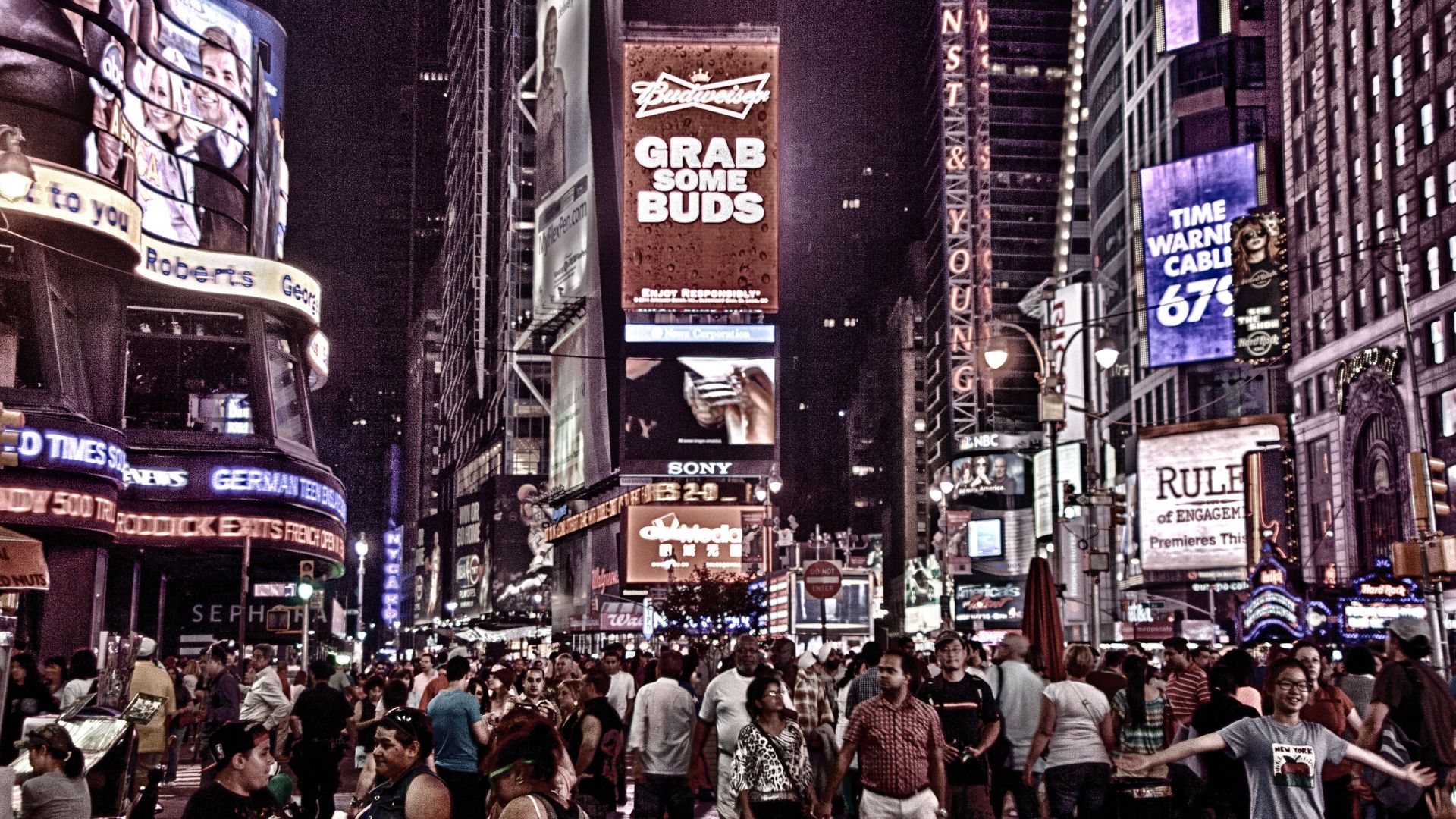The very first official paid television ad came out in the United States on July 1st, 1941, at 2:30 p.m., over New York station WNBT. It was an advertisement for Bulova Watches. It lasted 10-seconds and showed a picture of a watch with a voiceover stating “America runs on Bulova time.”
The advertisement was simple, announcing a product to a captive audience that mostly couldn’t even afford TVs. Since then, advertising has grown and changed into the sophisticated, interactive experience we have today.
In the 1940s, most televisions were in bars, so television ads typically targeted males with sports interests. The earliest TV ads were modeled after successful radio campaigns and targeted products men were likely to purchase – beer, cigarettes, and cars.
Typically, advertisers would sponsor an entire TV show, and work their product into the show and even the show title. (If you’re interested in reading more about the history of television business models, check out Broadpeak’s “The History of the Television business models.”) A hallmark of television ads from the 40s was straight-forward information listing the benefits of a product and sometimes showing a demo.
When the 50s came around, ads branched out a bit more. Televisions started being more affordable, so advertisers could target the middle class. A focus on selling the “American Dream” became popular, with advertisers appealing to men and women with products that supported a family-oriented, domestic lifestyle.
Television ads focused on sound branding with catchy jingles and unforgettable slogans that helped people remember brands and products. The Roto-Rooter Jingle is a great example as one of the oldest continuously used jingles in advertising history:
The 60s saw a shift in advertising towards creativity and emotion as ways to connect and engage potential buyers. There was a move towards targeting youth culture, characterizing and targeting customers based on different lifestyles, brand personification through the use of spokespersons (for example, the Pillsbury Doughboy – https://www.youtube.com/watch?v=EY9fK1fSVW0 ), humor, and emotion. It was the beginning of the golden age of advertising, and many of the techniques that started in the 1960s carry through to today.
Ads in the 70s took lifestyles to a new level. Where in the past, ads were more likely to focus on the product and its features, television ads from the 70s focused on how a product helped buyers enhance their lifestyles and better display their values. See the memorable ‘You Got Peanut Butter in My Chocolate’ ad here:
Ads were also likely to compare to competitor products, not always truthfully, with the result being that regulations were added to keep advertisers honest. During this time period, subliminal messaging was also employed, and later banned (the ad that was complained about was for Husker Du – https://www.youtube.com/watch?v=tk5qmRPNTRs ).
Computers were also starting to become popular, and this allowed advertising agencies to collect more detailed information on consumers. Demographics details were used to better position brands and develop compelling television advertisements.
As America entered the 1980s, television ads started to use solution selling to reach consumers. Advertisements would begin by suggesting a problem, then offering a product as the solution. (Solution advertising is shown in the popular ‘The Clapper’ commercial – https://www.youtube.com/watch?v=Ny8-G8EoWOw) This decade where television ads with more extreme lengths started to occur, either very long ads, like infomercials, or very short 15 second ads.
This decade also marks the start of cable TV starting to become popular. This opened up the number of shows available. Where previously, the audience-consumer was stuck choosing between a small number of shows across a few major networks, now a lot more was possible.
Television ads from the 90s focused on storytelling to showcase both a brand and a product. For example, Nike had a series of ads showing athletes overcoming unique challenges while wearing their shoes. Advertisers focused on youth culture and linking their brand and product to charities. In addition to storytelling, television ads also often employed humor to make themselves memorable. See one of the Got Milk? Ads here:
Cable TV in the 1990s was as popular as it was in the 80s if not more so, with video-on-demand becoming available as well as making it possible to view television on your computer.
And that’s when advertising started to really change. The 00s-present transformed the viewer experience from captive audience that had to be home in time to watch their favorite show (and the accompanying ads) to an experience that was data driven, highly targeted, and included things like:
- On-demand viewing with DVRs, TiVo, and eventually services like Hulu and Netflix
- Ad-blockers, so people don’t always have to watch advertisements
- Multi-platform experiences – viewers can watch an ad on their computer and click a link to a website to learn more
- Social media and ad-supported streaming
- Programmatic buying of TV ads that are data driven so the right audience is targeted
- Interactive and shoppable ads with QR codes that link to products, voice-activated purchases, and product showcases
- Artificial intelligence, that allows the creation and optimization of personalized ad variations for different audience segments
While all of these changes have a massive impact on television advertising, it’s interesting to note that classic techniques are still employed. You can still see ads that are purely informational and focused on listing product benefits, particularly if they are for medical products.
Ads still target particular lifestyles and values, use catch phrases, emotional storytelling, and humor to connect. Jingles are still used, though not as often as they once were. Alongside these traditional methods for reaching viewers, new techniques have appeared.
One of the biggest changes is the idea of the viral advertisement, where viewers don’t just watch an ad, they enjoy it so much they want to share it with their friends. In formats like Hulu or Netflix, this isn’t immediately possible, so advertisers repost their ads on YouTube, hoping viewers will search the ad and share it.
There are other big changes, for example many show viewers watch on their TV or computer while scrolling on their phones. Advertisers now have to create campaigns that capture attention on both screens! Ads can also now be interactive, with some advertisers opting for ads that let viewers click choices, or even click away from their show to view products and make purchases.
All of these changes have a massive impact on how television advertisements are created. Because viewers are constantly flooded with content and can watch an advertisement on multiple platforms, more must be done to catch and maintain their attention. Ads must be targeted and highly personalized, and to do that, advertisers must be able to collect a lot of data on who their viewers are.
Broadpeak can help navigate the challenging world of advertising with a variety of products and tools:
- Dynamic Ad Insertion (DAI) that’s ad-blocker proof – Show viewers contextual, personalized ads in both live and on-demand (VoD/DVR) content.
- Interactive Ads with Click2® – Allow viewers to interact with your ads and receive notifications via SMS about product details. This information can provide valuable click-through tracking and new purchase funnels.
- Seamless Inclusion of First-Party Metadata – Broadpeak enables you to include first-party metadata from platform. Collect content type, device, location, and consent status for ad requests. Optimize ad matching and bids.
- Performance-Based Metrics – Directly collect information about your ads like whether they were viewed, when they were viewed, and demographics details about your viewers.











